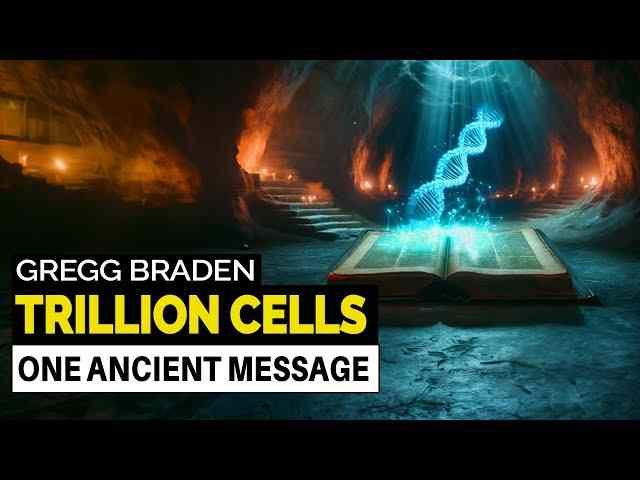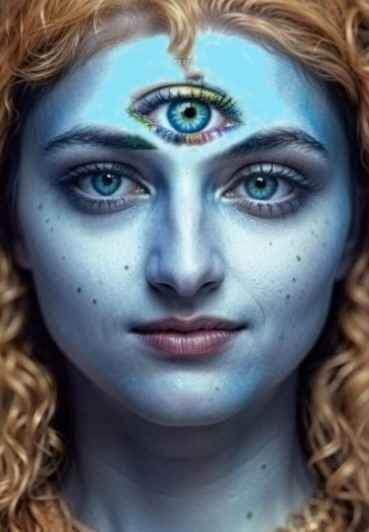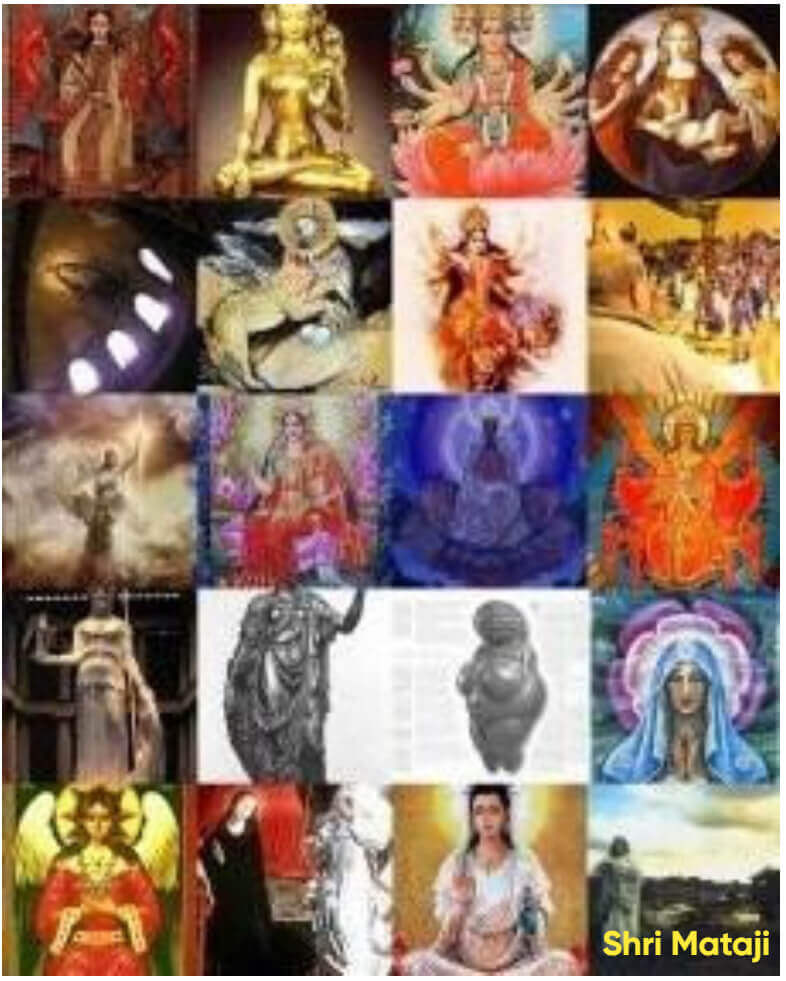Humanity's Eternal Essence: The Interplay of Atoms, Consciousness, and Divine Self
This article explores the eternal essence of humanity through the lens of atoms and consciousness. Drawing from the Devi Gita and Upanishadic Mahavakyas, it reveals how the human body—composed of 7 octillion atoms—is a cosmic masterpiece animated by pure consciousness. Atoms are indestructible, and consciousness is timeless, forming the soul’s divine architecture. The teachings affirm that our true Self is Brahman, eternal and blissful. Death is not an end but a transformation, and awakening to this truth leads to liberation in life. Humanity’s story is not merely biological—it is spiritual, cosmic, and eternal.

Trillion Cells in Human Body, One Core Message—God Eternal Within!
Introduction: A Cosmic Legacy
Humanity's story is woven into the fabric of the cosmos. Born from the Big Bang 13.8 billion years ago, the atoms that constitute our bodies have traversed an extraordinary journey through the hearts of stars, scattering across the universe to ultimately form life on Earth. Comprising roughly 7 octillion atoms (7 followed by 27 zeros), the human body is a masterpiece of divine craftsmanship. Each breath, heartbeat, and thought is orchestrated by these eternal particles, animated by the boundless Consciousness that permeates all existence. This interplay of atoms and Consciousness reveals humanity's divine origin and its indestructible essence.
The Divine Architecture of the Human Body
The 7 octillion atoms within us are not mere particles but the building blocks of a miraculous design. Organized into molecules, cells, tissues, and organs, they operate in perfect harmony to sustain life. This intricate precision reflects the infinite intelligence of the universe—a divine order that unites all beings. From the rhythm of our pulse to the firing of neurons, the symphony of atomic interactions underscores our connection to the cosmos, affirming that we are both of the stars and of the divine.
The Mahavakyas: Illuminating the Eternal Self
The Upanishadic Mahavakyas, or "great sayings," distill the profound wisdom of Vedanta, guiding humanity toward its true nature:
Prajnanam Brahma ("Consciousness is Brahman"): Consciousness is the foundation of all reality, the essence that underlies the cosmos. (Aitareya Upanishad, Rigveda)
Tat Tvam Asi ("That Thou Art"): The individual Self is inseparable from the infinite Divine. (Chandogya Upanishad, Samaveda)
Ayam Atma Brahma ("This Self is Brahman"): The personal Self is one with the universal Self. (Mandukya Upanishad, Atharvaveda)
Aham Brahmasmi ("I am Brahman"): The realization of one's unity with the eternal Divine. (Brihadaranyaka Upanishad, Yajurveda)
These teachings reveal that the Consciousness animating our atomic structure is our eternal essence, connecting us to the divine reality of Brahman.
Atoms and Consciousness: The Pillars of Eternity
Atoms and Consciousness form the indestructible foundation of existence, each playing a vital role in humanity's divine nature:
Atomic Eternity: Atoms are indestructible, endlessly transforming across forms. The atoms in our bodies have been part of stars, oceans, and myriad life forms, linking us to the cosmos through an eternal cycle.
Consciousness as Timeless: Beyond the physical, Consciousness is the eternal observer, unbound by time or decay. It is the divine spark that animates life, transcending birth and death.
The Soul's Composition: The soul, a fusion of eternal Consciousness and indestructible atoms, is the core of our being, persisting beyond the physical body's dissolution.
Together, atoms and Consciousness affirm the eternal continuity of human existence, bridging the material and spiritual realms.
The Eternal Journey of the Self
Humanity's divine essence is illuminated through the dynamic interplay of atoms and Consciousness:
Cosmic Origins: The atoms in our bodies were forged in stellar cores and dispersed through supernovae, eventually forming Earth's ecosystems and our physical forms. Every cell carries this cosmic heritage, a testament to our unity with the universe.
The Dance of Life: Through breathing, eating, and other exchanges, atoms flow continuously through our bodies, connecting us to all life. Consciousness orchestrates these processes—heartbeats, digestion, thoughts—with effortless precision, sustaining our existence.
The Soul's Continuity: The soul, composed of eternal Consciousness and atoms, endures beyond physical death. Tens of thousands of near-death experiences (NDEs) across cultures, alongside scriptural insights, provide compelling evidence for Consciousness's persistence, framing death as a transition rather than an end.
Indestructible Essence: While the body may dissolve, its atoms persist, and its Consciousness remains eternal. This dual indestructibility underscores the soul's unending journey through existence.
Awakening to the Self: The Path to Liberation
Realizing the eternal Self is the pinnacle of spiritual awakening, leading to moksha (liberation) or jivanmukti (liberation in life). This journey involves:
Embracing Oneness: The Mahavakyas teach that the Self is one with Brahman. Recognizing this unity dissolves the illusion of separation, aligning us with the eternal Divine.
Living Eternal Life Now: Awakening to our divine nature frees us from fear, ego, and attachment, allowing us to experience bliss and awareness in the present moment, before physical death.
Spiritual Practices: Meditation, self-inquiry, and devotion align our awareness with eternal Consciousness. Contemplating the Mahavakyas fosters a direct experience of their truth.
Harmony with Nature: Life is an ongoing exchange of atoms with the Earth. By honoring this connection through mindful living, we celebrate the divine interplay of atoms and Consciousness.
Conclusion: Embracing Eternal Existence
Humanity is a divine fusion of indestructible atoms and eternal Consciousness. The atoms in our bodies, born of stars, and the Consciousness that animates us, the essence of the cosmos, affirm our eternal nature. The Mahavakyas guide us to awaken to this truth, revealing that eternal life is not a distant promise but a reality accessible here and now.
Death is not an end but a transformation, a continuation of the soul's eternal journey. By embracing this truth, we transcend the fear of mortality and live with joy, fully present in each moment. We are called to seek spiritual awakening, honor the divine within, and live in harmony with Nature—the source of our being. As the Mahavakya declares, Tat Tvam Asi—That Thou Art. Let us live this truth, celebrating our eternal essence and our unity with the cosmos.
Pariah Kutta (https://adishakti.org)https://grok.com/chat/5800452d-1245-45d1-9923-c7929f2ba916
Related Articles:
THE GREAT MOTHER
The Goddess is Supreme Feminine Guru
MahaDevi Research Paper (PDF)
The Divine Feminine in China
The Indian Religion of Goddess Shakti
The Divine Feminine in Biblical Wisdom Literature
Divine Feminine Unity in Taoism and Hinduism
Shekinah: The Image of the Divine Feminine
The Feminine Spirit: Recapturing the Heart of Scripture
Islam and the Divine Feminine
Tao: The Divine Feminine and the Universal Mother
The Tao as the Divine Mother: Embracing All Things
The Tao of Laozi and the Revelation of the Divine Feminine
Doorway of Mysterious Female ... Within Us All the While
The Eternal Tao and the Doorway of the Mysterious Female
Divine Feminine Remains the Esoteric Heartbeat of Islam
Holy Spirit of Christ Is a Feminine Spirit
Divine Feminine and Spirit: A Profound Analysis of Ruha
The Divine Feminine in Sufism
The Primordial Mother of Humanity: Tao Is Brahman
The Divine Feminine in Sahaja Yoga
Shekinah: She Who Dwells Within
Shekinah Theology and Christian Eschatology
Ricky Hoty, The Divine Mother
Centrality of the Divine Feminine in Sufism
A God Who Needed no Temple
Silence on (your) Self
The Literal Breath of Mother Earth
Prophecy of the 13 Grandmothers
Aurobindo: "If there is to be a future"
The Tao Te Ching and Lalita Sahasranama stand alone
New Millennium Religion Ushered by Divine Feminine
A Comprehensive Comparison of Religions and Gurus

